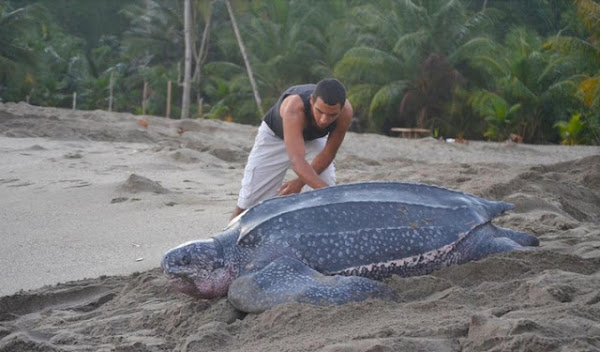A young indigenous Venezuelan boy named Elias Pereira had found a leatherback sea turtle stranded in a storm-created water body while walking along Grande Riviere Beach in Trinidad with his mother. Young Pereira, who’s a marine biologist, noticed that it was a female leatherback and had just laid eggs.
He immediately guided back the luth to the ocean after clearing the sand, which blocked access to the shore from the pool of water with the help of his mother. Pereira sent an email to the Huffington Post along with some photographs of the incident, in which Pereira wrote,” It felt great knowing that I had rescued a treasure of the ocean, an animal under the danger of extinction”.
Furthermore, he mentioned in the email his visit to a turtle conservationist where he was told that the leatherback would have died in the river if he had not rescued it. The luths have a significant role in many mythologies and religions, especially in Asia and North America, and are often associated with creation myths.
The Seri or Comcaac are an indigenous group of people in the Mexican state of Sonora. The leatherback sea turtle is a significant part of their culture as they believe that it is one of their five main creators. They consider the creature to be sacred and have profound respect for the animal. After noticing the huge downfall of the turtle population, the elders of the tribe, along with the youngsters created a group named “Grupo Tortuguero Comaac” for conservation activities.
The Seri have strong emotional, spiritual, and cultural ties to the leatherback. So using both their traditional knowledge and western technology, the Seri work hard to manage the turtle population and its natural habitat. The leatherback sea turtles, which grow up to 1.4 to 1.7 m and 998 kg, are now listed in the IUCN Red List of Threatened Species as Vulnerable.
